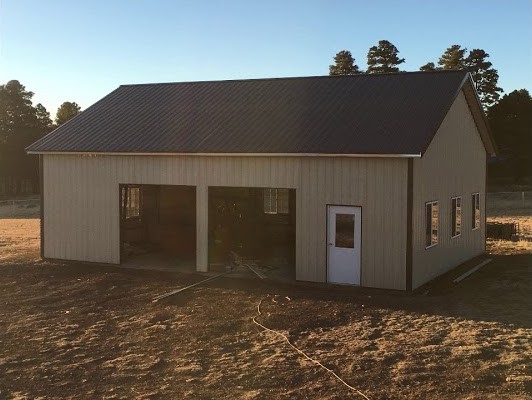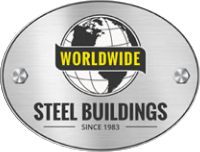How to Cool Your Metal Garage This Summer

As summer temperatures rise, keeping your metal garage cool becomes increasingly important. Whether you use your garage for storage, as a workshop, or even as a recreational space, maintaining a cooler environment can prevent damage to your tools and vehicles, improve comfort, and reduce energy costs. In this guide, we’ll explore the best ways to keep your garage cool in the summer, ensuring it remains a comfortable and functional space throughout the hot summer months.
Importance of Cooling Your Metal Garage
Preventing Damage to Tools and Vehicles
Metal garages can become heat traps, causing internal temperatures to soar. This excessive heat can lead to damage to tools, equipment, and vehicles stored inside. Prolonged exposure to high temperatures can degrade materials, cause rust, and impair the functionality of your valuable items. By implementing cooling strategies, you protect these assets from the adverse effects of extreme heat.
Creating a Comfortable Workspace
A cool garage provides a more comfortable working environment, making it easier to complete projects and spend time in the space. High temperatures can cause discomfort and fatigue, reducing productivity and making it unpleasant to work in your garage. Effective cooling methods can transform your garage into an inviting and efficient workspace.
Reducing Energy Costs
If your garage is attached to your home, the heat from the garage can seep into adjoining spaces, increasing the overall temperature inside your home. This can force your HVAC system to work harder, leading to higher energy bills. By cooling your garage, you can prevent this heat transfer, keeping your home cooler and reducing energy costs.
Effective Cooling Methods
Insulation
Proper insulation is a critical component in maintaining a cool garage. It helps regulate the indoor temperature by preventing hot air from entering and cool air from escaping. Proper insulation can significantly reduce the amount of heat that penetrates your garage, making it easier to keep the space cool.
Tips for Insulating Your Garage
- Choose the Right Insulation Materials: Opt for insulation materials that offer high R-values and excellent heat reflection properties. Materials like foam board, reflective insulation, and spray foam are ideal for metal garages.
- Insulate the Garage Door: The garage door is a significant source of heat transfer. Installing an insulated garage door or adding garage door insulation panels to your existing door can greatly reduce heat ingress.
- Seal Gaps and Cracks: Use weatherstripping and caulking to seal any gaps or cracks in the garage’s walls, door, and windows to prevent hot air from entering and cool air from escaping.
- Insulate the Roof and Walls: Adding insulation to the roof and walls of your garage will create a thermal barrier, keeping the interior cooler.
Ventilation
Ventilation is essential for removing hot air from your garage and promoting air circulation. Proper ventilation helps reduce heat buildup and maintains a more comfortable temperature.
Ways to Improve Ventilation
- Install Roof Vents: Roof vents allow hot air to escape from the top of the garage, where heat tends to accumulate.
- Use Exhaust Fans: Exhaust fans actively pull hot air out of the garage, replacing it with cooler outside air.
- Cross Ventilation: Create cross ventilation by opening windows or doors on opposite sides of the garage. This setup encourages airflow and helps cool the space.
- Solar-Powered Ventilation: Consider using solar-powered roof vents or exhaust fans to enhance ventilation without increasing energy costs.
Air Conditioning Options
Air conditioning is an effective way to cool a hot garage, providing consistent and reliable cooling during hot summer days.
- Portable AC Units: Portable air conditioners are flexible and can be moved around as needed. They are easy to install and provide targeted cooling.
- Mini-Split Systems: Mini-split systems offer efficient cooling without the need for ductwork. They are ideal for garages as they provide zoned cooling and are energy-efficient.
- Window AC Units: Window units can be installed in a window or a cut-out in the wall. They are relatively affordable but might not be as energy-efficient as other options.
- Evaporative Coolers: These coolers use water to cool the air and are a cost-effective alternative to traditional air conditioners, especially in dry climates.
- Central AC Systems: A central air conditioning unit provides consistent cooling but may require extensive installation and ductwork.
Pros and Cons of Each Cooling Option
- Portable AC Units: Pros: Easy to install, flexible. Cons: Can be noisy, may require regular maintenance.
- Mini-Split Systems: Pros: Energy-efficient, quiet operation, zoned cooling. Cons: Higher initial cost, professional installation required.
- Window AC Units: Pros: Affordable, easy to install. Cons: Less energy-efficient, limited cooling capacity.
- Evaporative Coolers: Pros: Low operating cost, eco-friendly. Cons: Less effective in humid climates, requires water source.
- Central AC Systems: Pros: Consistent cooling, high efficiency. Cons: Expensive installation, requires ductwork.
Fans and Dehumidifiers
Fans and dehumidifiers can enhance cooling by promoting air circulation and reducing high humidity levels, creating a more comfortable environment.
Tips on Selecting the Right Fan and Dehumidifier
- Choose Energy-Efficient Models: Look for fans and dehumidifiers that are energy-efficient to minimize operating costs.
- Strategic Placement: Place fans to create optimal air circulation. Ceiling fans can help distribute cool air, while box fans can be positioned to draw in outside air.
- Consider Noise Levels: Select models with low noise levels if you plan to use the garage as a workspace.
- Regular Maintenance: Clean and maintain fans and dehumidifiers regularly to ensure their effectiveness and longevity.
Shade and Reflective Surfaces
Shading the exterior of your garage can significantly reduce heat absorption, keeping the interior cooler.
Creative Ways to Provide Shade
- Install Awnings: Awnings over windows and doors can block direct sunlight and reduce heat gain.
- Use Shade Sails: Shade sails are an inexpensive and flexible option for providing shade to the garage exterior.
- Plant Trees or Shrubs: Planting trees or shrubs around the garage can provide natural shade and reduce the surrounding temperature.
- Apply Reflective Paint: Use heat-reflective paint on the garage’s exterior walls and roof to minimize heat absorption.
- Solar Panels: Installing solar panels on the roof not only provides shade but also generates electricity, reducing energy costs.
Additional Tips for Cooling Your Garage
Declutter Your Garage
Removing excess items from your garage can improve airflow and reduce heat buildup. A well-organized garage space is easier to cool and more comfortable to use.
Install an Attic Fan
If your garage has an attic, installing an attic fan can help expel hot air and reduce heat transfer to the garage below. This can be an effective DIY project for homeowners looking to enhance their garage’s ventilation system.
Use Reflective Window Film
Applying reflective film to your garage windows can block a significant amount of heat from entering, keeping the interior cooler during hot days. This is a cost-effective way to improve your garage’s temperature control.
Invest in a Heat Pump
Heat pumps can provide both heating and cooling for your garage, making them a versatile option for year-round temperature control. They are energy-efficient and can be a great addition to your garage’s HVAC system.
Consider Ductless Systems
Ductless air conditioning systems, also known as mini-splits, are ideal for garages without existing ductwork. They offer efficient cooling and are relatively easy to install, providing a flexible cooling solution for your garage space.
Take the Next Step for a Cooler Garage
Maintaining a cool metal garage during the hot summer months is achievable by implementing a combination of effective cooling methods. Proper insulation, ventilation, air conditioning options, and the use of fans, dehumidifiers, and shading techniques can transform your garage into a comfortable and productive space. By following these tips, you can protect your tools and vehicles, create a pleasant working environment, and reduce energy costs.
Ready to upgrade your metal garage for better comfort and efficiency? Visit our garages and workshops to explore our high-quality metal building kits and customization options. Our expert team is here to help you create the perfect garage solution for your needs. Contact us today to get started!





